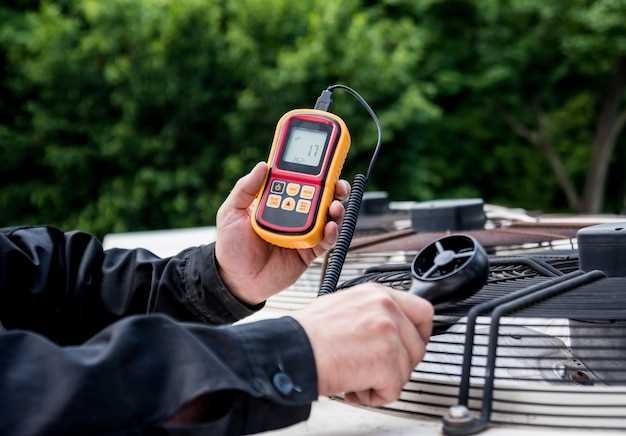
The Volkswagen Corrado, known for its sporty design and robust performance, can sometimes present drivers with various mechanical issues, particularly related to its gearbox. Among these, transmission noises are one of the most common concerns that enthusiasts and casual drivers alike may encounter. Understanding the nature of these sounds is essential for effective troubleshooting and timely maintenance.
When diagnosing transmission noises, it is crucial to pay attention to the specific type of sound being produced. Clicking, grinding, or whining noises can indicate different underlying problems. A clicking sound may suggest issues with the CV joints or the driveshaft, while a grinding noise often points to worn gears or bearings within the gearbox. Whining noises, on the other hand, might be associated with low fluid levels or failing components. Proper identification of these sounds not only helps in troubleshooting but can also prevent further damage to the transmission system.
Addressing transmission noises requires a systematic approach to ensure all potential issues are considered. Begin by inspecting the fluid levels and condition, as low or contaminated transmission fluid can lead to a plethora of problems. Furthermore, conducting a thorough examination of the gearbox components can reveal potential wear or damage. By focusing on the origin and nature of the noises, owners can make informed decisions about necessary repairs, ultimately enhancing the longevity and performance of their Corrado.
Identifying Gearbox Noise Symptoms
When diagnosing gearbox issues in a Corrado, recognizing the specific symptoms of noise can significantly aid in troubleshooting. Gearbox noise often manifests in various ways, and understanding these symptoms is crucial for effective diagnosis.
One common symptom is a grinding or crunching sound during gear shifts. This noise typically indicates that the synchronizers are worn or that there is insufficient lubrication within the gearbox. If the noise occurs primarily in higher gears, it may signal internal damage or misalignment of the gears.
A whirring or whining noise, especially while accelerating, often points to issues with bearings or gears. This can be attributed to wear and tear, lack of proper lubrication, or misalignment. It’s important to determine whether the noise changes with vehicle speed or engine RPM to pinpoint the exact cause.
If a rattling noise is present, particularly during idle or low speeds, this can suggest a loose component within the gearbox itself. This symptom can stem from mounting brackets, a loose inspection cover, or damaged internal parts. Proper examination is needed to ensure all components are securely fastened.
Additionally, a clunking sound can indicate problems with the driveshaft or differential, particularly when engaging or disengaging gears. This noise often suggests that there are wear issues or failure in the drivetrain components.
Monitoring these distinct noise symptoms during operation can guide you in troubleshooting the gearbox issue effectively. It is essential to document when and how these noises occur, as this information will be invaluable in diagnosing and rectifying the underlying problems within the gearbox.
Common Causes of Transmission Noise
Transmission noise in your Corrado can arise from various sources within the gearbox. Identifying these issues is crucial for effective troubleshooting and ensuring the longevity of your vehicle’s transmission system. Below are some common causes of transmission noise:
- Worn Gears: Over time, gears can wear down due to friction and inadequate lubrication, leading to grinding or whining noises during operation.
- Low Transmission Fluid: A low level of transmission fluid can cause insufficient lubrication, resulting in whining or clunking sounds. Regular fluid checks are essential.
- Improper Gear Selection: Shifting into the wrong gear can produce abnormal noises. Ensure that the correct gear is selected based on speed and engine RPM.
- Faulty Bearings: Worn or damaged bearings within the gearbox can create a rumbling noise, particularly when the vehicle is in motion.
- Clutch Issues: Problems with the clutch, such as misalignment or wear, can generate noises during engagement or disengagement, affecting overall transmission performance.
- Transmission Mounting: Worn or damaged transmission mounts can lead to vibrations and noise as the gearbox moves excessively under load.
Addressing these common causes of transmission noise promptly can prevent further damage and costly repairs. Regular maintenance and careful observation during driving will assist in early detection.
Tools Required for Troubleshooting

When addressing transmission noises in the Corrado, having the right tools is essential for effective troubleshooting. To begin with, a mechanical stethoscope is invaluable for pinpointing the source of the noise. This tool amplifies sound, helping you isolate whether the noise originates from the gearbox or other components.
Next, a wrench set is crucial for loosening or tightening connections around the transmission area. This will allow you to inspect the gearbox mounting and surrounding parts for potential issues. A jack and jack stands are also necessary, as they provide the access needed to work safely underneath the vehicle.
Additionally, having a torque wrench ensures that all fasteners are secured to the manufacturer’s specifications, preventing unnecessary movement that could exacerbate noise issues. Also, a socket set is required to remove the gearbox for in-depth inspection if needed.
Lastly, a digital multimeter can be used to check electrical connections within transmission sensors that could influence performance and contribute to noise. Overall, these tools will equip you to effectively diagnose and address common issues within the transmission system.
Step-by-Step Diagnosis Process

Diagnosing transmission noises in a Corrado requires a systematic approach. Follow these steps to troubleshoot the gearbox effectively and identify the root cause of the issue.
Step 1: Identify the Noise
Begin by determining the type of noise originating from the gearbox. Common sounds include grinding, whining, clunking, or humming. Each type can indicate different problems, which will guide your troubleshooting process.
Step 2: Check Fluid Levels
Ensure that the transmission fluid is at the recommended level. Low fluid levels can lead to inadequate lubrication, causing various noises. If levels are low, replenish with the manufacturer’s specified fluid.
Step 3: Inspect for Leaks
Examine the gearbox and surrounding areas for signs of fluid leaks. Puddles or wet spots indicate that fluid may be escaping, leading to noise and potential damage if left unaddressed.
Step 4: Listen for Specific Conditions
Take the car for a test drive and listen for changes in noise under various conditions:
| Condition | Description |
|---|---|
| Idle | Noises may indicate internal gearbox issues. |
| Acceleration | Whining sounds might suggest worn bearings. |
| Deceleration | Clunking noises can indicate worn or broken components. |
Step 5: Gear Engagement Test
Test the engagement of each gear. Smooth shifting indicates a healthy gearbox, while difficulty in engaging gears or noise during shifting points to potential clutch or synchronizer issues.
Step 6: Check for Vibration
Excessive vibration can signal imbalances or misalignment within the gearbox components. Inspect mounts and alignment to ensure everything is properly secured.
Step 7: Visual Inspection
Perform a thorough visual inspection of the gearbox. Look for signs of wear, damage, or misalignment. Check the transmission case for cracks or external damage that could contribute to noise issues.
Step 8: Consult a Professional
If the source of the noise remains unidentified, or if repairs are beyond your expertise, consult a qualified mechanic. They have the tools and experience necessary to further diagnose and resolve gearbox issues effectively.
Repair Options for Common Issues
When diagnosing transmission noises in the Volkswagen Corrado, identifying the underlying issues is crucial. Several common problems can lead to gearbox noise, which may require different repair solutions depending on the severity and nature of the damage.
1. Worn Bearings: One of the frequent causes of noise in the gearbox is worn bearings. To address this issue, a complete gearbox inspection is essential. If bearings are found to be deteriorated, replacing them can significantly reduce unwanted noise. Additionally, utilizing high-quality bearings designed for the Corrado can improve overall performance.
2. Insufficient Lubrication: Noise may also occur due to inadequate lubrication within the gearbox. If the lubricant level is low or the oil is contaminated, it can lead to increased friction and noise. In this case, changing the transmission fluid to the manufacturer-recommended type and ensuring proper fluid levels is necessary to restore normal operation.
3. Gear Misalignment: Misalignment of gears can produce a grinding or whining noise. This can often be rectified by realigning the gearbox components. If misalignment is severe, it may be necessary to replace certain gears to prevent further damage and restore the gearbox’s functionality.
4. Damaged Gear Teeth: Damaged or chipped gear teeth can lead to excessive noise and eventual failure. In this scenario, removing the gearbox for disassembly is the first step. The affected gears should be replaced, and the gearbox should be reassembled to eliminate the noise while ensuring durability.
5. Clutch Issues: Sometimes, noises attributed to the gearbox stem from clutch problems. A slipping or misadjusted clutch can cause unusual sounds. Inspecting the clutch system and making necessary adjustments or replacements can resolve these issues and enhance the overall driving experience.
By addressing these common transmission issues promptly, Corrado owners can maintain their vehicle’s performance and silence any troublesome noises originating from the gearbox.
Preventive Maintenance Tips for Gearbox Longevity
Regular inspections of the gearbox are essential to identify potential issues before they escalate into serious problems. Checking for unusual noise or vibration can signal an underlying issue that requires immediate attention. Always prioritize listening for odd sounds that could indicate wear or malfunction.
Ensure the gearbox is adequately lubricated. Using high-quality gear oil tailored to your specific gearbox type is crucial. Regularly check the oil level and replace the lubricant according to the manufacturer’s recommendations to prevent overheating and reduce friction.
Monitor operating temperatures. Excessive heat can cause damage to internal components and lead to gearbox failure. Keep the cooling system in optimal condition to maintain the ideal operating temperature for the gearbox.
Maintain proper alignment of the gearbox with other connected components. Misalignment can create additional stress leading to noise and premature wear. Regularly inspect and adjust the alignment as necessary to ensure smooth operation.
Examine and replace worn-out seals and gaskets. Leaks can lead to a loss of lubricant, increasing the risk of noise and damage within the gearbox. Regularly check for signs of leaks and perform replacements as needed.
Lastly, consider periodic diagnostic testing using vibration analysis or ultrasound inspection. These tools can help detect abnormal noise patterns and wear that might not be immediately noticeable, allowing for proactive maintenance interventions.










